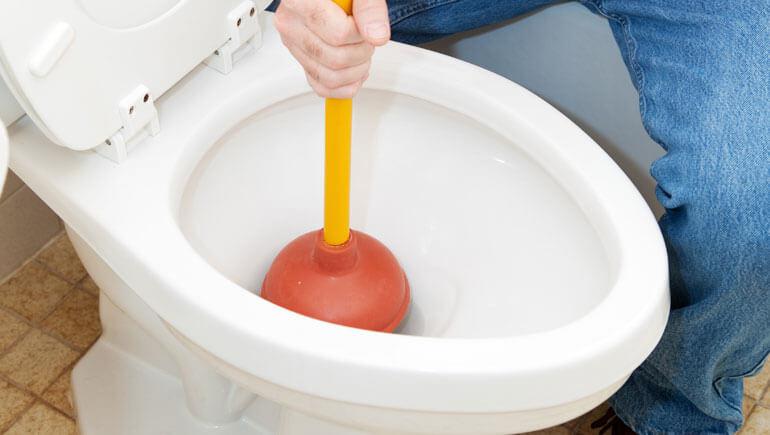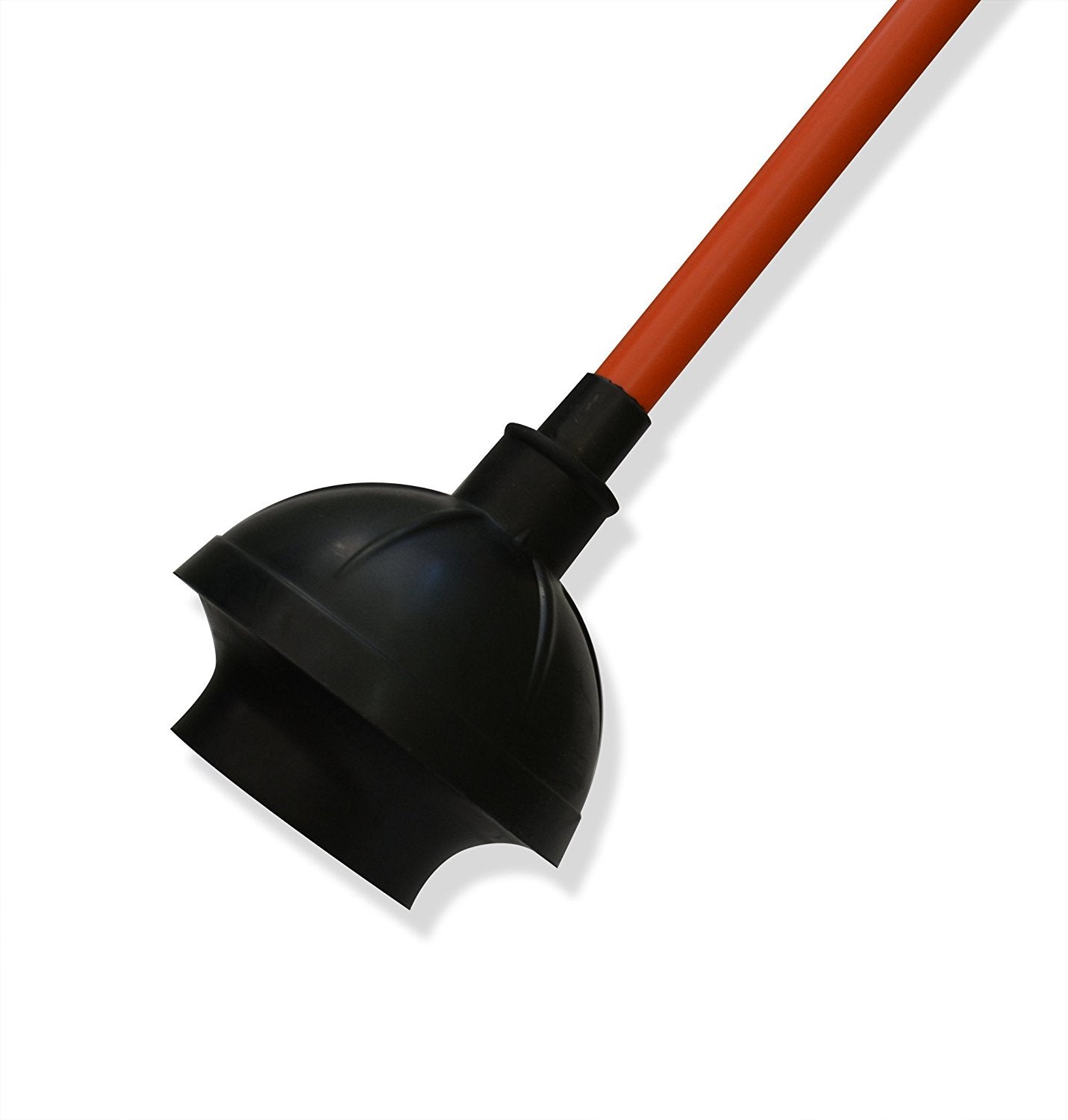What are your opinions on A Guide to Plungers (and How to Use Them)?

Introduction
Proper maintenance of family drains is important for stopping clogs and making certain smooth water circulation. One of the key devices in every homeowner's toolkit is the plunger, together with different drainpipe cleansers developed to take on persistent clogs properly. This article explores exactly how to make use of bettors and drain cleaners effectively to maintain your drains moving openly.
Section 1: Recognizing Bettors
Kinds of Plungers
There are numerous types of plungers readily available, each designed for various kinds of drains pipes and obstructs. The most typical kinds include cup bettors, flange bettors, and accordion bettors.
Exactly How Plungers Work
Plungers service the principle of developing pressure and suction to dislodge clogs. When correctly used over a drainpipe, they create a vacuum cleaner that can take out particles or break up obstructions.
Picking the Right Bettor
Picking the ideal bettor relies on the type of drainpipe and the nature of the clog. Mug bettors are optimal for sinks and bathtubs, while flange bettors are better fit for bathrooms because of their layout.
Typical Errors with Bettors
Preventing these errors guarantees effective plunging: inappropriate seal around the drain, insufficient pressure, and not clearing bordering debris.
Section 2: Using Plungers Successfully
Prep work
Before plunging, make certain the bettor covers the drain completely and forms a limited seal. Clear any kind of noticeable debris around the drain opening.
Technique
Begin with mild plunging movements to build suction. Rise pressure gradually, making use of a stable rhythm. Repeat as necessary until the drainpipe gets rid of.
Repairing Tips
If plunging doesn't work, attempt adjusting the seal, applying petroleum jelly for a much better seal, or using a various type of plunger.
Area 3: Understanding Drain Cleansers
Types of Drain Cleaners
Drain pipes cleaners can be chemical or chemical. Chemical cleaners utilize solid chemicals to dissolve blockages, while enzymatic cleaners use natural enzymes to break down organic matter.
Just How Drainpipe Cleaning Company Work
Chemical cleansers respond with blockages to dissolve them, while enzymatic cleansers break down organic products like hair and grease without harming pipelines.
Safety Considerations
Constantly put on handwear covers and eye protection when using chemical drainpipe cleansers. Ensure ample ventilation and adhere to supplier instructions thoroughly.
Eco-Friendly Alternatives
Think about using vinegar and cooking soft drink or enzyme-based cleaners for eco-friendly alternatives that are safer for pipes and the environment.
Section 4: Using Drain Cleaners Efficiently
Application Techniques
Put chemical cleansers directly right into the drainpipe opening. Permit them to benefit the recommended time prior to flushing with warm water. Enzymatic cleaners need to rest over night.
Safety measures
Prevent mixing various sorts of cleansers, as this can create harmful fumes. Never ever make use of chemical cleaners in conjunction with a bettor, as splashing can happen.
Handling Stubborn Blockages
For persistent obstructions, think about making use of a plumbing serpent or calling a specialist plumbing to prevent damage to pipelines.
Conclusion
Finally, recognizing just how to utilize plungers and drain cleaners properly is vital for maintaining healthy pipes systems. By choosing the right devices and strategies, home owners can take on minor blockages and prevent major pipes concerns down the line.
How to Use a Plunger to Unclog a Drain
The humble plunger is a simple yet effective tool for breaking clogs in sinks, tubs and toilets. This handy tool is easy to use. You can make the most of its power if you understand how it works. Ready to dive in? Here’s what you need to know.
Safety First!
Never use a plunger with drain chemicals. Water will splash as you work, and the chemicals can spatter, burning skin and eyes. It’s a good idea to use rubber gloves and wear safety goggles when you work on a clog.
Choose the Right Tool for the Job
Plungers come in two different styles. Sinks, bathtubs and showers require a cup plunger. Like its name suggests, the rubber end is shaped like a cup. Use a flange plunger on toilets. These plungers have a rubber funnel extending from the cup. A plunger needs to be big enough to cover the drain.
Ready, Set, Plunge!
Coat the rim: Coat the plunger rim with petroleum jelly. This helps make a better seal.
Block outlets: Hold a wet rag over nearby outlets such as the overflow vent or the drain in a second sink.
Release air: Insert the plunger at an angle into the water. Water will displace air in the cup. A water-filled cup is more forceful than one filled with air.
Keep the plunger upright: Hold the plunger perpendicular to the drain. Use fast, forceful strokes, but make the first stroke gentle. The first stroke can create a splash if the cup still contains air. Thrust the plunger 15 to 20 times.
Snap off the plunger: The final stroke should be a strong upward motion that ends when the plunger snaps off the drain.
Repeat the process: you may need to repeat this sequence several times. When the water drains away, your work is done. High-five! https://plumbernw.com/blog/how-to-use-a-plunger-to-unclog-a-drain/

Application Techniques
Put chemical cleansers directly right into the drainpipe opening. Permit them to benefit the recommended time prior to flushing with warm water. Enzymatic cleaners need to rest over night.
Safety measures
Prevent mixing various sorts of cleansers, as this can create harmful fumes. Never ever make use of chemical cleaners in conjunction with a bettor, as splashing can happen.
Handling Stubborn Blockages
For persistent obstructions, think about making use of a plumbing serpent or calling a specialist plumbing to prevent damage to pipelines.
Conclusion
Finally, recognizing just how to utilize plungers and drain cleaners properly is vital for maintaining healthy pipes systems. By choosing the right devices and strategies, home owners can take on minor blockages and prevent major pipes concerns down the line.
How to Use a Plunger to Unclog a Drain
The humble plunger is a simple yet effective tool for breaking clogs in sinks, tubs and toilets. This handy tool is easy to use. You can make the most of its power if you understand how it works. Ready to dive in? Here’s what you need to know.
Safety First!
Never use a plunger with drain chemicals. Water will splash as you work, and the chemicals can spatter, burning skin and eyes. It’s a good idea to use rubber gloves and wear safety goggles when you work on a clog.
Choose the Right Tool for the Job
Plungers come in two different styles. Sinks, bathtubs and showers require a cup plunger. Like its name suggests, the rubber end is shaped like a cup. Use a flange plunger on toilets. These plungers have a rubber funnel extending from the cup. A plunger needs to be big enough to cover the drain.
Ready, Set, Plunge!
Coat the rim: Coat the plunger rim with petroleum jelly. This helps make a better seal. Block outlets: Hold a wet rag over nearby outlets such as the overflow vent or the drain in a second sink. Release air: Insert the plunger at an angle into the water. Water will displace air in the cup. A water-filled cup is more forceful than one filled with air. Keep the plunger upright: Hold the plunger perpendicular to the drain. Use fast, forceful strokes, but make the first stroke gentle. The first stroke can create a splash if the cup still contains air. Thrust the plunger 15 to 20 times. Snap off the plunger: The final stroke should be a strong upward motion that ends when the plunger snaps off the drain. Repeat the process: you may need to repeat this sequence several times. When the water drains away, your work is done. High-five! https://plumbernw.com/blog/how-to-use-a-plunger-to-unclog-a-drain/

I was introduced to that editorial about Here's How to Correctly Use a Toilet Plunger from a buddy on another web address. Liked our posting? Please share it. Let other people locate it. Thank you so much for going through it.
Click Here